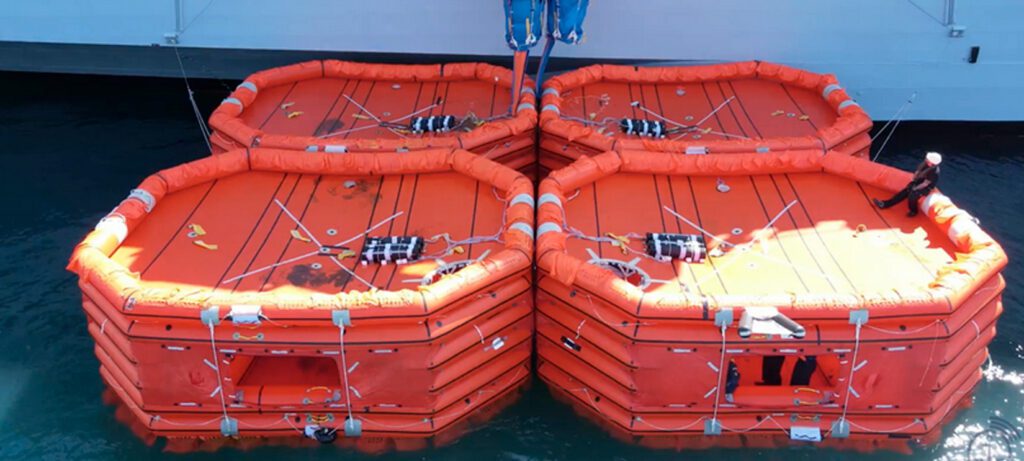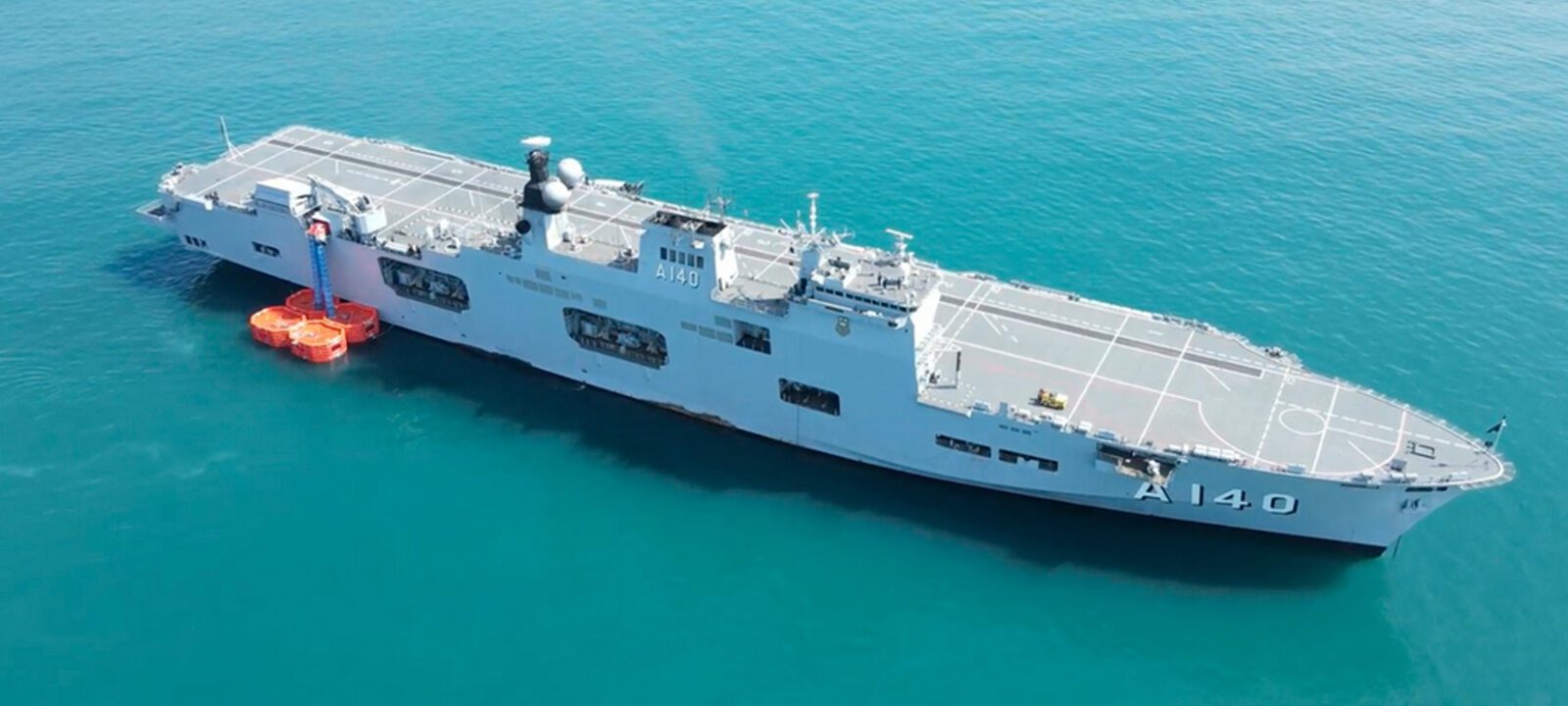NAM “Atlântico” has equipment that allows the crew to evacuate quickly if they need to abandon ship
By First Lieutenant (RM2-T) Luciana Almeida – On board the NAM “Atlântico”
On a warship, extreme events such as major fires or serious damage can happen on the high seas, putting the crew at risk. Providing an efficient solution to safeguard crew members in emergencies is the purpose of the MES (Marine Evacuation System). The equipment allows the crew to leave the ship more quickly and safely if they need to abandon ship.
According to the officer in charge of Seamanship and Salvage on the Multipurpose Aerodrome Ship (NAM) “Atlântico”, Lieutenant Fábio Chaves do Nascimento Pereira, the system basically works by pneumatic drive. “It has a kind of water slide, which we call a chute. There are two tubes that come out of the equipment and inflate four rafts below. The crew then goes down as if they were on a water park slide and is divided equally between the rafts [which hold up to 430 people in total],” explains the officer.
The NAM “Atlântico” also has 70 units of the traditional life rafts, which hold up to 25 people each. However, the MES works more quickly. Together, the two systems are capable of safely evacuating almost twice as many people as the ship can hold, which is 1,100 crew members. Such redundancy, however, is desirable in emergency situations.
“We did a launch last year and everything happened very quickly. The work was well executed and we found that the equipment is very good for ships of this size, which have a large crew and are always working with a significant number of seconded personnel,” said Lieutenant Fábio Chaves.
The MES salvage system is modern and very common on merchant and cruise ships. Some British Navy ships have it, as do a few warships, explains the Commander of the NAM “Atlântico”, Captain Mozart Junqueira Ribeiro. “We inherited MES from the British Royal Navy, because when we bought their ship, the system was already included. Even in the Royal Navy, only the ‘Queen Elizabeth’ (their current Fleet Captain) and the ‘Prince of Wales’ (of the same class) have it. It’s more common on passenger ships, but even so, it’s not available on all of them, only on the most modern ones,” he said.
“The Brazilian Navy doesn’t have any other ship with this capability, so we’ve already launched it here in the country. We even invited soldiers and officers from the Chameleon [Admiral Marques de Leão Training Center] to accompany the MES training, because it’s an innovation for our Navy. Very few warships have this equipment,” added the Commander.


How it works
In the first test carried out in Brazil, in 2022, the crew took part in an exercise that simulated an accident on the ship, with the need to use the equipment. Two Indian lines were set up for abandonment, so that two soldiers could descend at a time. “We had the support of one serviceman who acted as leader and another as collider. At the bottom, more soldiers acted as helpers, to divide up the people in the rafts. When everyone has effectively disembarked, another vessel approaches to separate the inflated rafts from the ship, and then they will work in the same way as a traditional life raft,” explains Lieutenant Fábio Chaves.
Every year, the MES is overhauled by a company affiliated to the one that used to carry out the service in the UK, from where the ship was acquired. Every six years, the equipment must be launched at sea to test its effectiveness. Before 2022, it had been launched for testing in 2016, and the next launch is scheduled for 2028.
Fonte: Agência Marinha de Notícias
